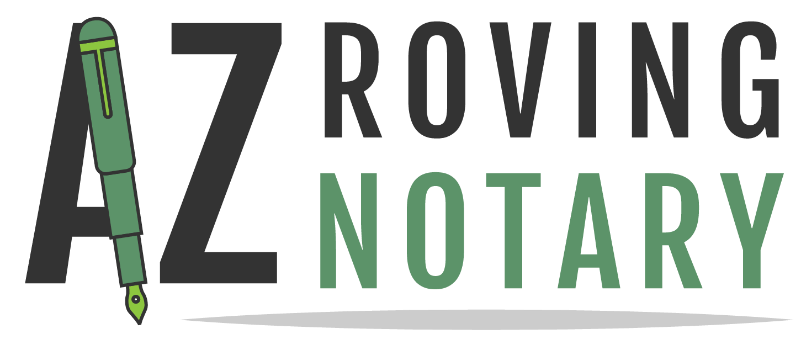Six Steps to Create a Legal* Digital Signature

STEP 1: DO I KNOW WHO SIGNED?
Through our Remote Online Notarization platform providers Secured Signing and Pactima, we provide a variety of online authentication options that can be tailored to fit the risk of the transaction. Documents can be verified independently and, they include an audit trail that includes proof of identity.
STEP 2: DO I KNOW THEY INTENDED TO SIGN THE DOCUMENT?
With Remote Online Notarization, the notary creates an audio/visual recording of the ceremony and stores the recording in a secure location such as the cloud or a non-internet connected hard drive as part of the notary journal. During this recording the notary asks each signer to to state their full name and that the signer agrees to be legally bound by the digital signature. Once the agreemen has been recorded, the signers can then click to place signatures, initials, dates, etc. on the document.

STEP 3: HAS THERE BEEN PROPER DISCLOSURE AND CONSENT?
Our remote online notarization platforms by Secured Signing and Pactima are compliant for obtaining consent for the electronic delivery of documents and well as the necessary review and/or approval of the necessary disclosures. During the signing ceremony, we have steps recorded that specifically allow the signer to review all of the documents prior to applying the signature.

STEP 4: HAS THE DOCUMENT BEEN ALTERED IN ANY WAY?
Secured Signing and Pactima, our remote online notarization platform providers incorporate technologies such as Hashing, Encryption and Public Key Cryptography to alert the recipient of the documents to any changes made to the document after the digital signature has been applied. The state or Arizona has very specific requirements for this type of protection. We refer you to your attorney and/or the Arizona Laws, Statues, Rules and Regulations that apply to this requirement.
STEP 5: IS THE DOCUMENT ELECTRONICALLY ACCESSIBLE TO ALL SIGNERS?
Federal, State and Local government agencies as well as private industry may have rules that the documents be available for many years. The notary is only required to store the Electronic Journal, original audit trail and audio/visual recordings of the signing ceremony for 5 years.
We provide all signers with a verifiable version of the signed document and audit trail for distribution and storage using the signer's own best practices. There is never a need to check back with the notary or the platform provider for verification of the signature as all information is stored in the digital package PDF that the signer receives.
Realizing that original documents and certified signatures/audit trails may be required to be downloaded more than one time, AZ Roving Notary stores the signed document packages for 72 hours to enable the signer to access the originals during that timeframe. After that the documents are no longer available to download.
STEP 6: CAN I PROVE IT?
We provide a detailed audit trail for the entire electronic transaction including facts like time, date and details that paper transactions cannot provide. Our platform providers Secired Signing and Pactima each have their own method of audit trails that meet the specifications for the State of Arizona. Our audit trails can provide the information to the independent authority verifying of all aspects necessary for non-repudiation of the transaction including but not limited to:
- The signer's identity
- The validity of the digital certificate
- The validity of the signing process
- The authenticity of the document
- The accurate time, date and place of the signing

UPDATE: September 3, 2020
We are not attorney's but this crossed our desk this morning for you to check out regarding
digital/electronic signatures.
Case: FTC vs Elegant Solutions, Inc et al. July 6, 2020 - Court ruling on Appeal in favor of FTC
Basically, for information purposes only, this case was about electronic signatures and why the signature in this case wasn't valid. As it turns out, the software used for the electronic signing did not allow the signer to read the entire document prior to signing the document. The software jumped the signer from signature to signature. A non-sophisticated signer might not know how to review the document prior to the signing or after the signing.
In the case of some of the companies that provide notary platforms - they use this jump technology to move their "notary punchers" through a large number of transactions per hour. Do these companies allow for a review of the document, prior to the signing and after the signing? Their notaries are paid very little and because of this "rush" the notarization process. Without the review of the documents, are these legal electronic/digital signatures? As an attorney, it is up to you to decide if you want to choose this "punch and go" notarization process.
At AZ Roving Notary, we use two platforms for notarizing your client's documents. In using both SECURED SIGNING and PACTIMA platforms, our notaries always ask and record the question - "have you read and reviewed your documents and do you understand the documents you are signing?" And, both platforms allow the signer the opportunity to review the document as they are signing. In addition, our notaries allow the client to call their attorney or advisor to ask a question if they don't understand a specific document or choice on a document that they are signing. Some attorney's actual sit in on the notarization so they can answer any question in a timely fashion. Attorney's that choose AZ Roving Notary for their clients always get the white-glove concierge treatment. There are no time limits for the signing ceremony (usually we allow up to one hour, but we aren't strict) and we don't make our notaries hit quotas per hour of documents completed.
How you choose an online remote notary service does reflect on the compliance of the process with the Secretary of State of Arizona.

* Disclaimer: By law, notaries are not allowed to give legal advice, recommendations or explanations. This blog is for marketing purposes and all information should be checked with the your attorney for accuracy and/or changes since publication.
The copyright for this information contained in this blog is attributed to SigniX, Inc. marketing materials and is used with their permission.
